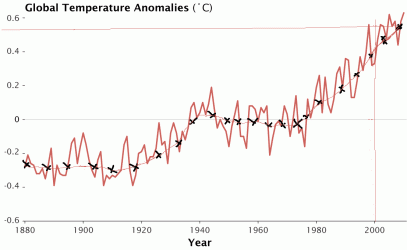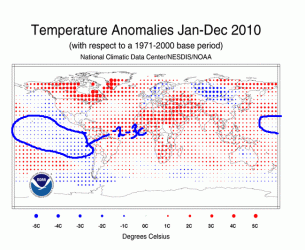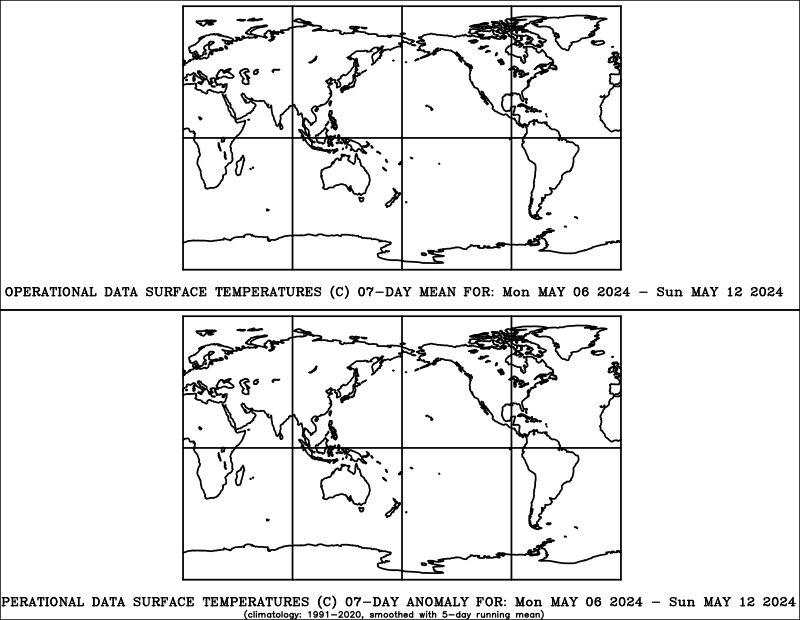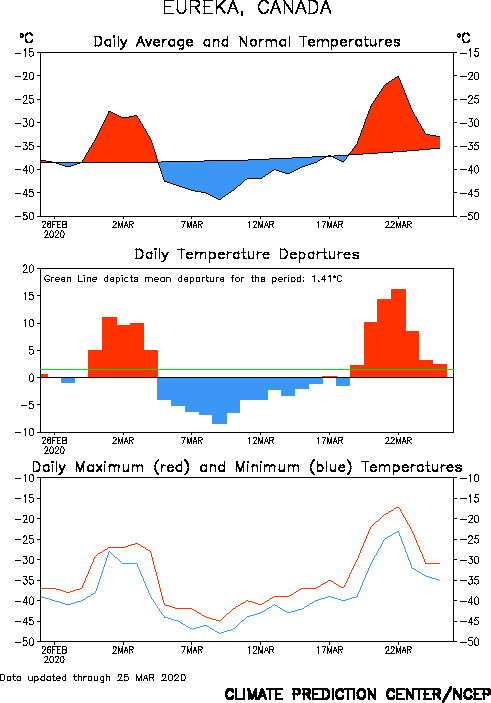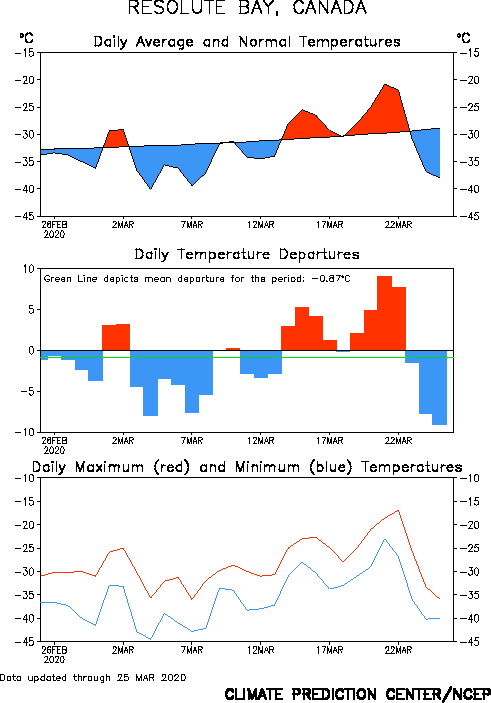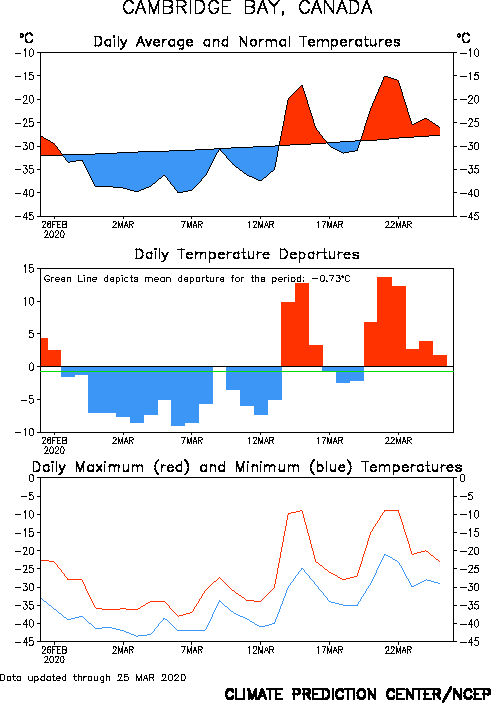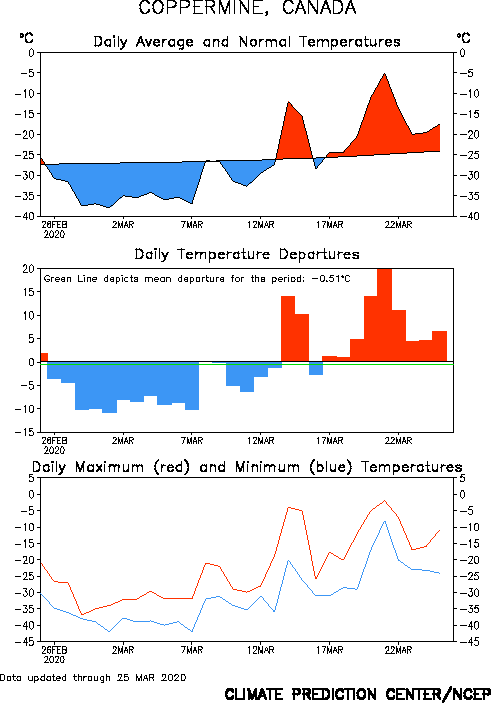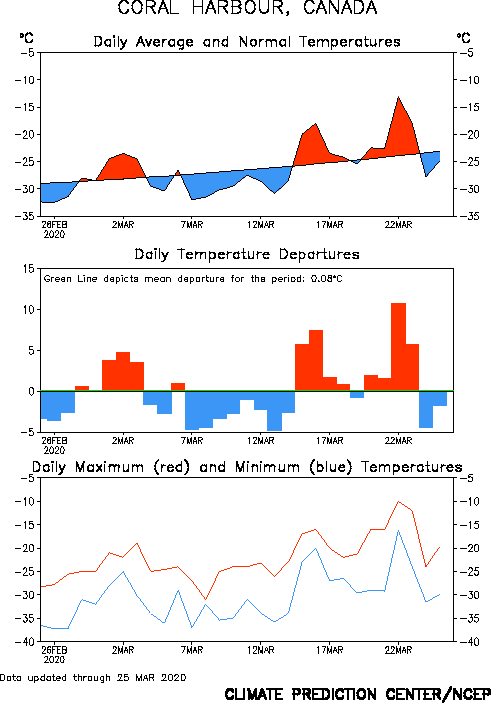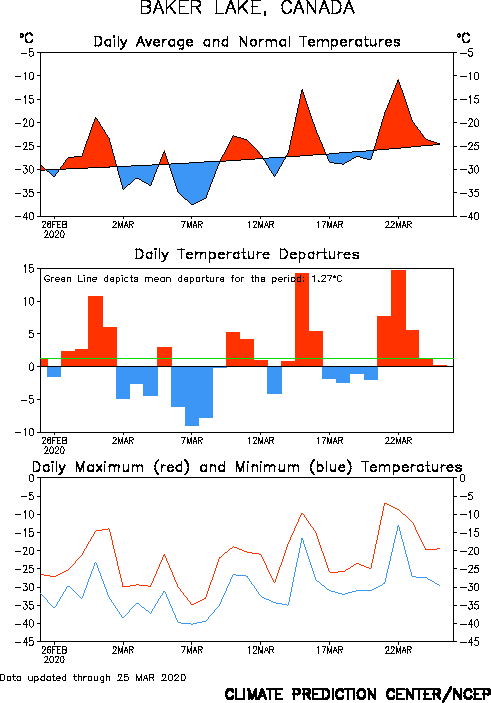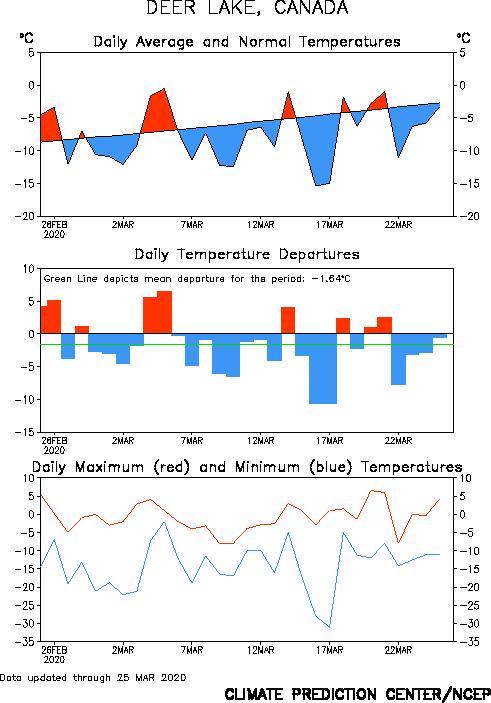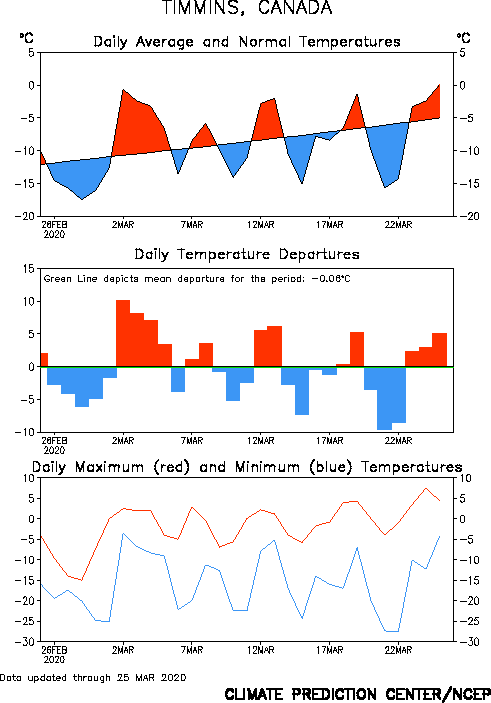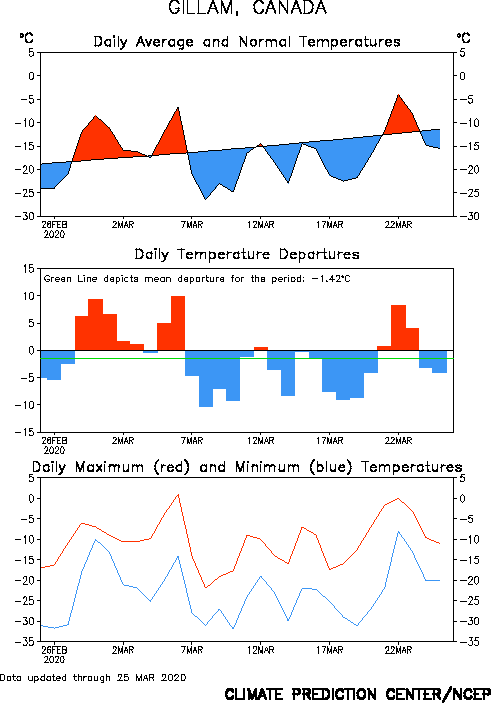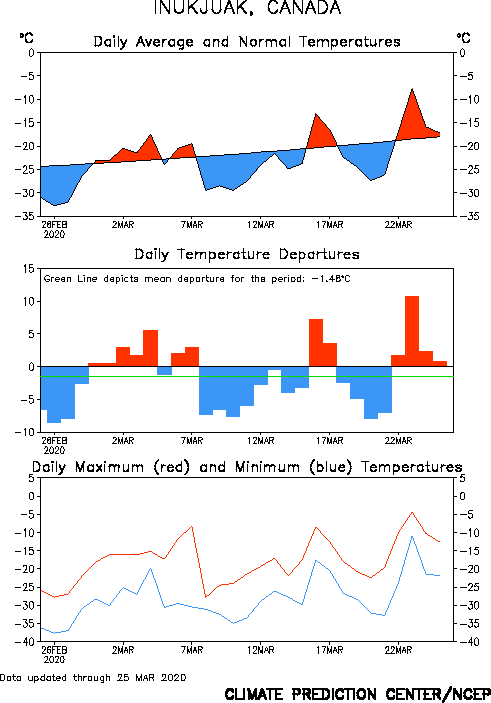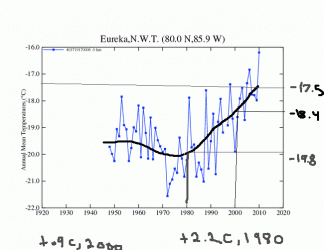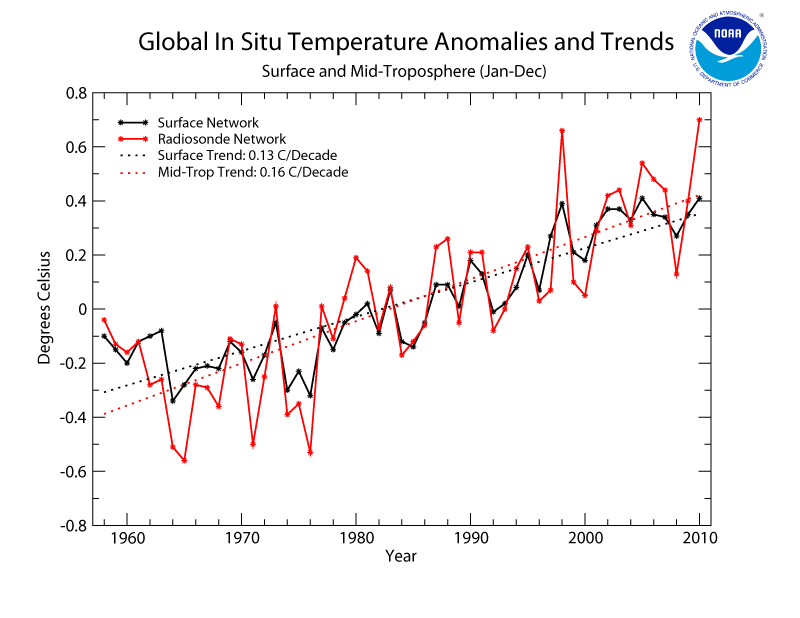ScienceRocks
Democrat all the way!
- Thread starter
- Banned
- #101
Global Highlights
* For 2010, the combined global land and ocean surface temperature tied with 2005 as the warmest such period on record, at 0.62°C (1.12°F) above the 20th century average of 13.9°C (57.0°F). 1998 is the third warmest year-to-date on record, at 0.60°C (1.08°F) above the 20th century average.
* The 2010 Northern Hemisphere combined global land and ocean surface temperature was the warmest year on record, at 0.73°C (1.31°F) above the 20th century average. The 2010 Southern Hemisphere combined global land and ocean surface temperature was the sixth warmest year on record, at 0.51°C (0.92°F) above the 20th century average.
* The global land surface temperature for 2010 tied with 2005 as the second warmest on record, at 0.96°C (1.73°F) above the 20th century average. The warmest such period on record occurred in 2007, at 0.99°C (1.78°F) above the 20th century average.
* The global ocean surface temperature for 2010 tied with 2005 as the third warmest on record, at 0.49°C (0.88°F) above the 20th century average.
* In 2010 there was a dramatic shift in the El Niño–Southern Oscillation, which influences temperature and precipitation patterns around the world. A moderate-to-strong El Niño at the beginning of the year transitioned to La Niña conditions by July. At the end of November, La Niña was moderate-to-strong.
Global Top 10
Warmest Years (Jan-Dec)* Anomaly °C Anomaly °F
2010 0.62 1.12
2005 0.62 1.12
1998 0.60 1.08
2003 0.58 1.04
2002 0.58 1.04
2009 0.56 1.01
2006 0.56 1.01
2007 0.55 0.99
2004 0.54 0.97
2001 0.52 0.94
The 1901-2000 average combined land and ocean annual temperature is 13.9°C (56.9°F), the annually averaged land temperature for the same period is 8.5°C (47.3°F), and the long-term annually averaged sea surface temperature is 16.1°C (60.9°F).
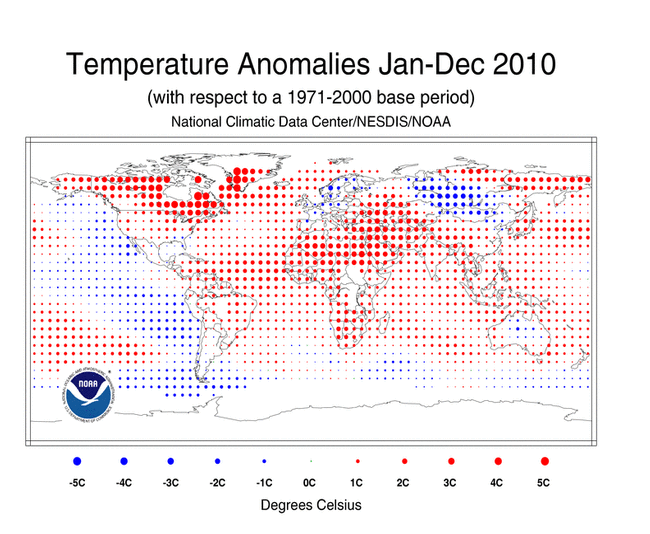
Enso-Pacific from equator to 20 north and south and 90-140 west.
January 15th 2005

April 16th 2005

7-16-2005

10-18-2005

12-17-2005

As you can see there was NO NINA in 2005. In fact the first of the year may of had a weak nino. The decrease of our stars output had yet to be seen that we are seeing today...Pretty impressive when you think about it. Id say more of a moderate year....This year meaning 2010 seen 4 months of nino and 7 and 1/2 of nina. Temperatures within the tropics shown above dropped more this year because of this monster to...Far more.
2005 peaked at .51c within the tropics for one month and went down to around .09c by Dec...With .2-.3c being the norm within the tropics that year based on UAH data. http://vortex.nsstc.uah.edu/data/msu/t2lt/uahncdc.lt
* For 2010, the combined global land and ocean surface temperature tied with 2005 as the warmest such period on record, at 0.62°C (1.12°F) above the 20th century average of 13.9°C (57.0°F). 1998 is the third warmest year-to-date on record, at 0.60°C (1.08°F) above the 20th century average.
* The 2010 Northern Hemisphere combined global land and ocean surface temperature was the warmest year on record, at 0.73°C (1.31°F) above the 20th century average. The 2010 Southern Hemisphere combined global land and ocean surface temperature was the sixth warmest year on record, at 0.51°C (0.92°F) above the 20th century average.
* The global land surface temperature for 2010 tied with 2005 as the second warmest on record, at 0.96°C (1.73°F) above the 20th century average. The warmest such period on record occurred in 2007, at 0.99°C (1.78°F) above the 20th century average.
* The global ocean surface temperature for 2010 tied with 2005 as the third warmest on record, at 0.49°C (0.88°F) above the 20th century average.
* In 2010 there was a dramatic shift in the El Niño–Southern Oscillation, which influences temperature and precipitation patterns around the world. A moderate-to-strong El Niño at the beginning of the year transitioned to La Niña conditions by July. At the end of November, La Niña was moderate-to-strong.
Global Top 10
Warmest Years (Jan-Dec)* Anomaly °C Anomaly °F
2010 0.62 1.12
2005 0.62 1.12
1998 0.60 1.08
2003 0.58 1.04
2002 0.58 1.04
2009 0.56 1.01
2006 0.56 1.01
2007 0.55 0.99
2004 0.54 0.97
2001 0.52 0.94
The 1901-2000 average combined land and ocean annual temperature is 13.9°C (56.9°F), the annually averaged land temperature for the same period is 8.5°C (47.3°F), and the long-term annually averaged sea surface temperature is 16.1°C (60.9°F).

Enso-Pacific from equator to 20 north and south and 90-140 west.
January 15th 2005

April 16th 2005

7-16-2005

10-18-2005

12-17-2005

As you can see there was NO NINA in 2005. In fact the first of the year may of had a weak nino. The decrease of our stars output had yet to be seen that we are seeing today...Pretty impressive when you think about it. Id say more of a moderate year....This year meaning 2010 seen 4 months of nino and 7 and 1/2 of nina. Temperatures within the tropics shown above dropped more this year because of this monster to...Far more.
2005 peaked at .51c within the tropics for one month and went down to around .09c by Dec...With .2-.3c being the norm within the tropics that year based on UAH data. http://vortex.nsstc.uah.edu/data/msu/t2lt/uahncdc.lt
Last edited:





